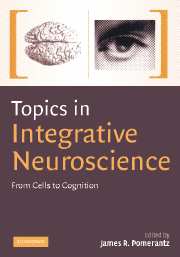Book contents
- Frontmatter
- Contents
- List of contributors
- Preface
- Overview of neuroscience, choice and responsibility
- 1 Neuroscience, choice and responsibility
- PART I HIGHER ORDER PERCEPTION
- PART II LANGUAGE
- PART III MEMORY SYSTEMS
- PART IV SENSORY PROCESSES
- Overview of sensory processes
- 13 Song selectivity, singing, and synaptic plasticity in songbirds
- 14 Voltage-dependent sodium currents in hair cells of the inner ear
- Index
- Plate section
- References
14 - Voltage-dependent sodium currents in hair cells of the inner ear
Published online by Cambridge University Press: 08 August 2009
- Frontmatter
- Contents
- List of contributors
- Preface
- Overview of neuroscience, choice and responsibility
- 1 Neuroscience, choice and responsibility
- PART I HIGHER ORDER PERCEPTION
- PART II LANGUAGE
- PART III MEMORY SYSTEMS
- PART IV SENSORY PROCESSES
- Overview of sensory processes
- 13 Song selectivity, singing, and synaptic plasticity in songbirds
- 14 Voltage-dependent sodium currents in hair cells of the inner ear
- Index
- Plate section
- References
Summary
Introduction
The hair cell is the mechanosensory cell of the auditory and vestibular organs of the inner ear. Sounds and head movements deflect the hair cells' apical bundles of specialized microvilli, inducing current flow through mechanosensitive ion channels in the bundles. The resulting change in membrane potential – the receptor potential – in turn modulates diverse voltage-gated ion channels in the basolateral membrane. The most numerous channels are potassium (K+)- selective and may be voltage- and/or calcium (Ca2 +)- activated. Flow of current through K+ channels tends to drive the hair cell towards its resting potential, providing negative feedback on the transduction current or, in some cases, amplifying the voltage response through electrical resonance. The properties of hair cell K+ channels have been the focus of many studies, in part because of the opportunity to link diversity in the repertoire of K+ channels to sensory signaling (Fettiplace & Fuchs, 1999). The voltage-gated Ca2 + channels of hair cells have been investigated because of their functional significance as activators of K+ current (e.g., Art & Fettiplace, 1987; Hudspeth & Lewis, 1988) and/or mediators of chemical transmission (e.g., Beutner et al., 2001; Engel et al., 2002; Parsons et al., 1994).
The voltage-gated sodium (Na+) currents of hair cells have only recently attracted significant attention. Because they have fast inactivation kinetics and frequently very negative voltage ranges of inactivation, hair cell Na+ currents can be negligible during standard voltage protocols, so that their distribution is not fully characterized.
- Type
- Chapter
- Information
- Topics in Integrative NeuroscienceFrom Cells to Cognition, pp. 385 - 413Publisher: Cambridge University PressPrint publication year: 2008
References
- 2
- Cited by



